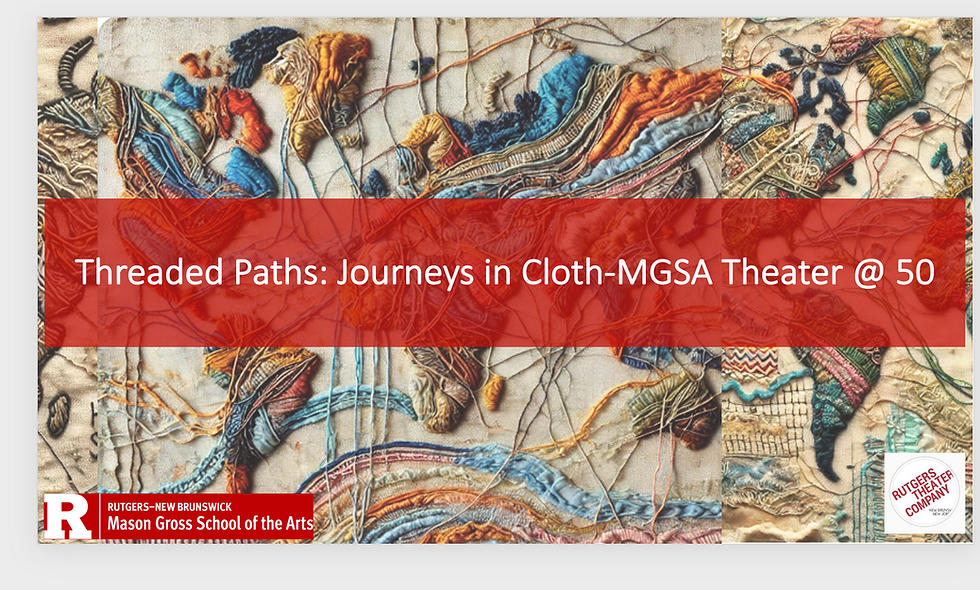Published! “Wandering Minds, Staged Discoveries” in Theatre Library Association’s Performing Arts Resources Journal
- vmramshur
- Jun 11
- 2 min read
“Librarians aren’t just resources, they’re co-conspirators in creative thinking, supporting both precision and productive wandering.”

I’m thrilled to share that our co-authored article, “Wandering Minds, Staged Discoveries: Exploring Indirect and Direct Research in Dramaturgy, Design, and Library Instruction”, has been published in the Theatre Library Association’s Performing Arts Resources, Volume 37 (2025), themed “Instruction.”
The Performing Arts Resources monograph series shines a light on the materials that keep theatre and performance history alive,from backstage archives to forgotten collections. It features essays on everything from public and private holdings to how we care for and manage these treasures. You'll also find rare historical documents and long out-of-print works, brought back into circulation so they aren’t lost to theatre scholarship. It’s a series that honors the stuff behind the stories, the tangible traces of performance past.
This project has been in development for a considerable amount of time. It was collaboratively written with respected co-authors and colleagues.
-Bret McCandless, MLS/PhD – Music and Performing Arts Librarian at Rutgers University–New Brunswick, whose expertise lies in the convergence of creative practitioners and education.
- Christopher Cartmill – playwright, director, translator, and Associate Professor of Professional Practice, Associate Chair, and Head of Dramaturgy at Mason Gross School of the Arts, Rutgers University.
In this, my first academic article, we explore a question I've contemplated for years, whether in the studio or the classroom: What truly constitutes research in a creative discipline such as costume design or dramaturgy? More crucially, how does it feel?
We name and examine two separate (yet complementary) research methodologies employed in theatrical work:
Direct research — the kind we all know: close readings, historical context, visual analysis, and facts in orderly columns.
Indirect research — the kind we often forget to name: drifting through an archive or the library stacks with no agenda, letting a shape or fragment lead us to a deeper truth, trusting associations, images, and intuition to guide us.
If you've ever designed a show or worked on any creative project and discovered your best idea in a photograph or some piece of seemingly unrelated inspiration to the original plan, or if you've roamed through a library and left with an unexpected book that altered everything, you've participated in indirect research. This article provides terminology and legitimacy to that process, positioning it alongside more conventional scholarly methods.
We also explore how librarians and libraries serve not only as resources but as partners in creative thinking. They offer tools for precision and for fruitful exploration. Through visual literacy, primary source access, and space for exploration, libraries can support both the fact-driven and the intuitive researcher.
Although the article's examples are rooted in costume design education, the aim is for its insights to resonate more widely across artistic practice, research instruction, and interdisciplinary teaching.
This work serves as both a scholarly contribution and a love letter to the research process, celebrating the chaotic journey of creation and the unforeseen paths that frequently lead to the most valuable discoveries.
May your next library trip or image-board scroll contain just the right amount of wandering.
Link below to a free open source access to the article:

Val



Comments